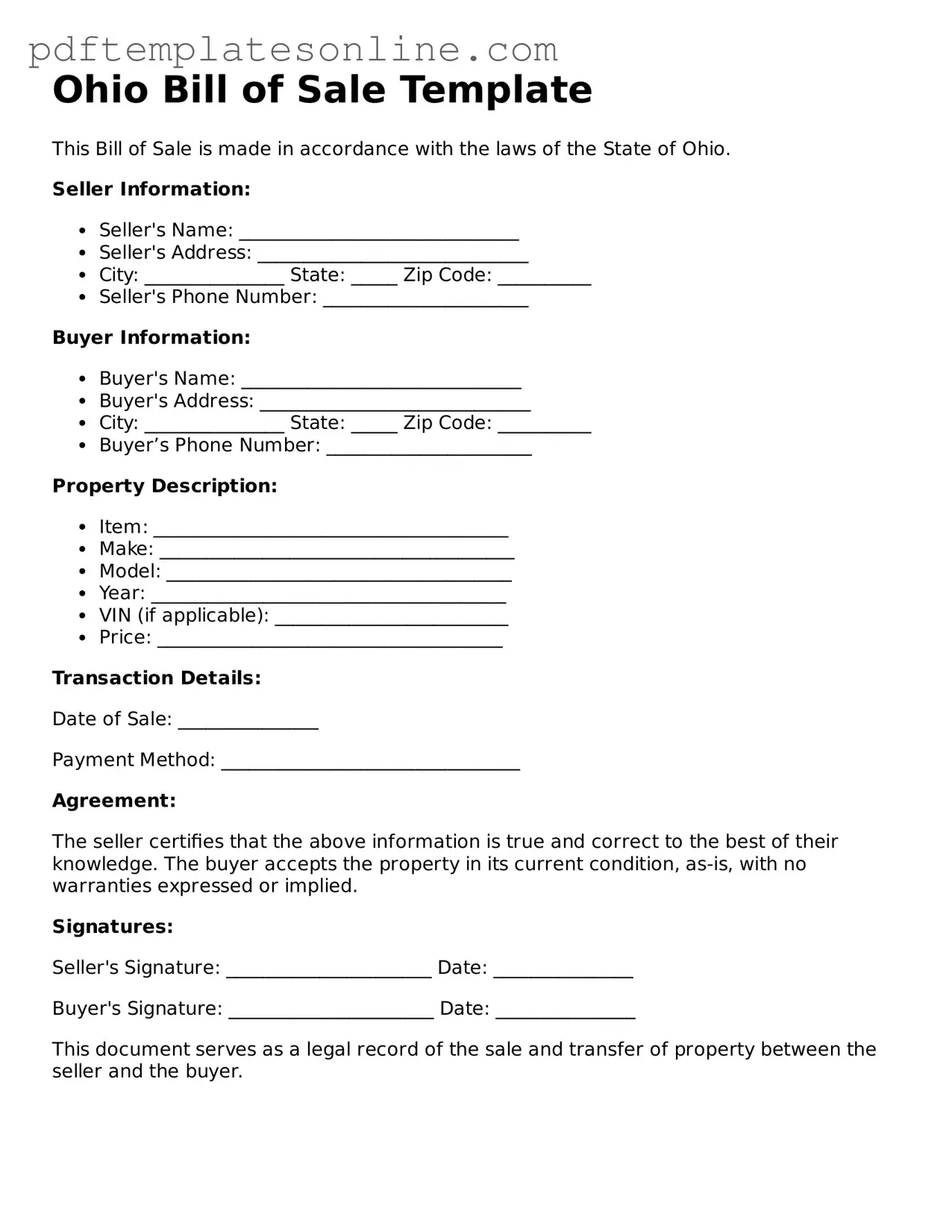Detailed Guide for Writing Ohio Bill of Sale
After obtaining the Ohio Bill of Sale form, you will need to complete it accurately to ensure a smooth transaction. This document serves as a record of the sale between the buyer and seller. Follow these steps to fill out the form correctly.
- Identify the Parties: Write the full name and address of both the seller and the buyer at the top of the form.
- Describe the Item: Provide a detailed description of the item being sold. Include make, model, year, and any identifying numbers, such as VIN for vehicles.
- Specify the Sale Price: Clearly state the total sale price of the item in both numerical and written form.
- Indicate the Date of Sale: Fill in the date on which the sale is taking place.
- Signatures: Both the seller and the buyer must sign the form. Include the date of each signature.
- Witness or Notary (if required): Some transactions may require a witness or notary signature. Check local requirements.
Once completed, both parties should retain a copy of the Bill of Sale for their records. This document can be important for future reference, especially for ownership verification or tax purposes.
